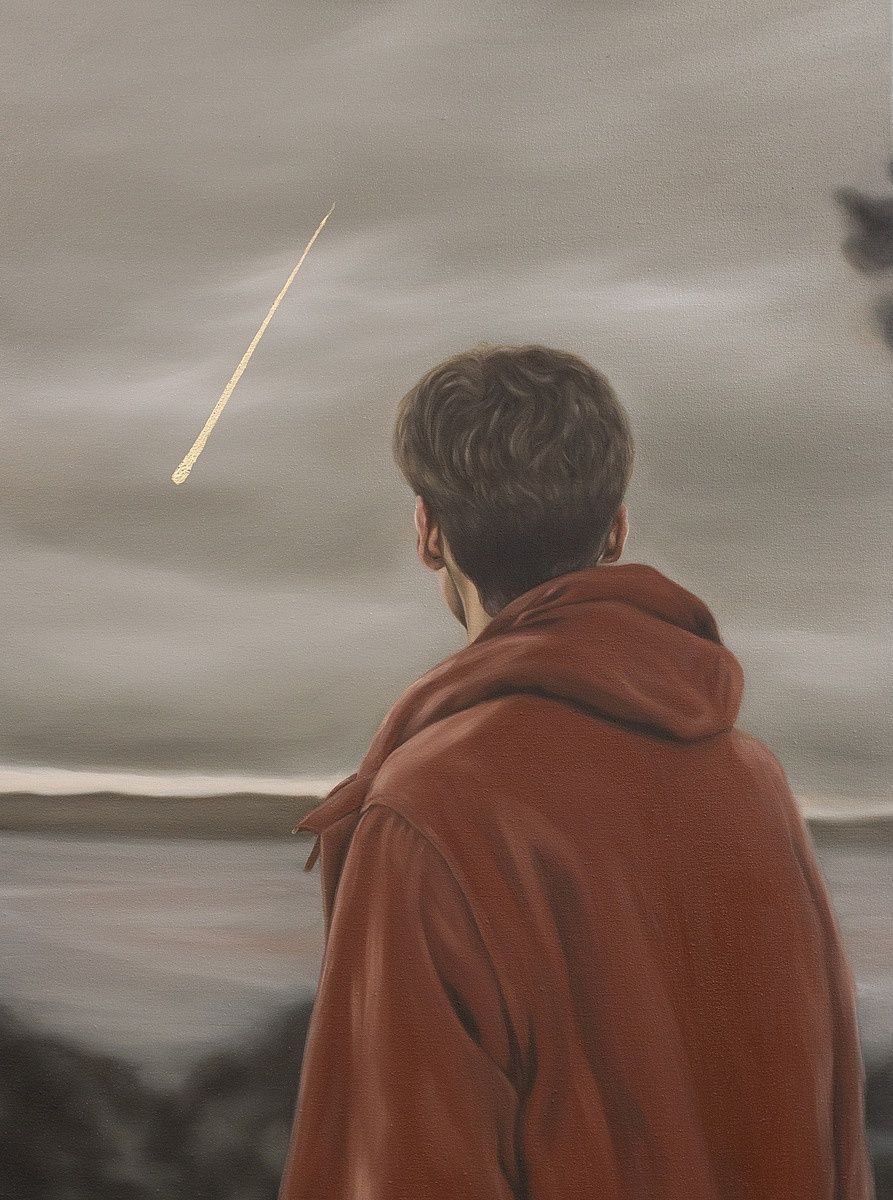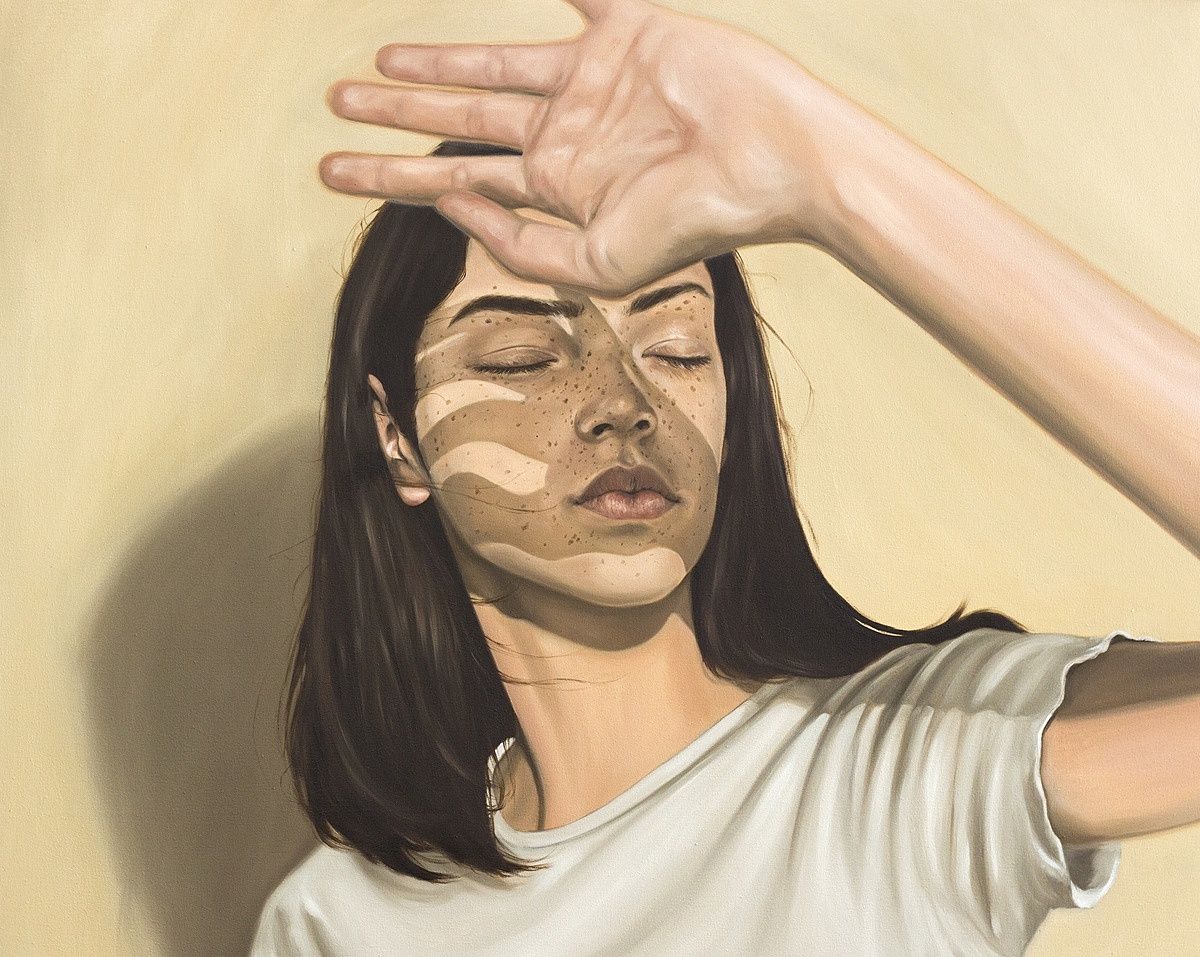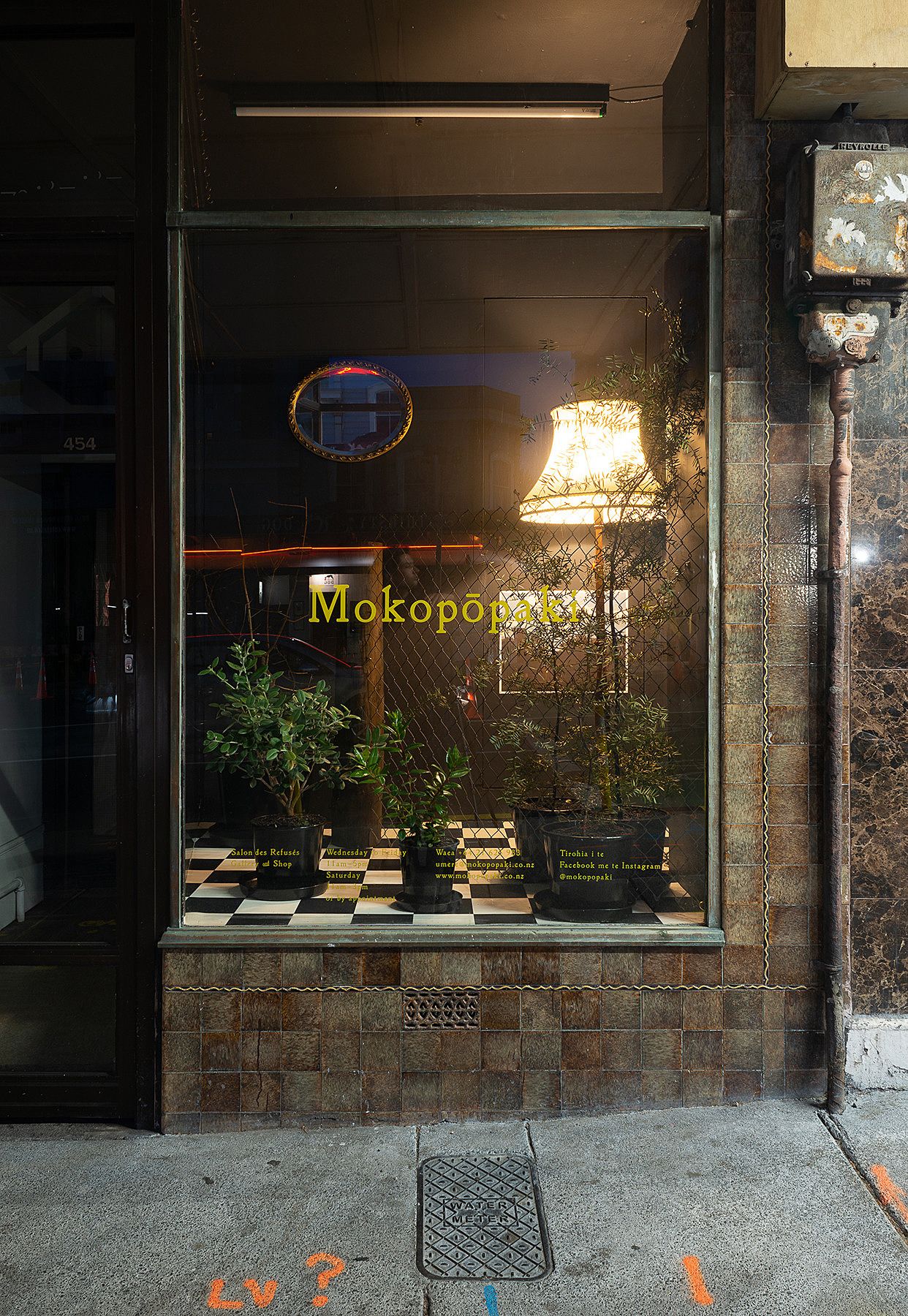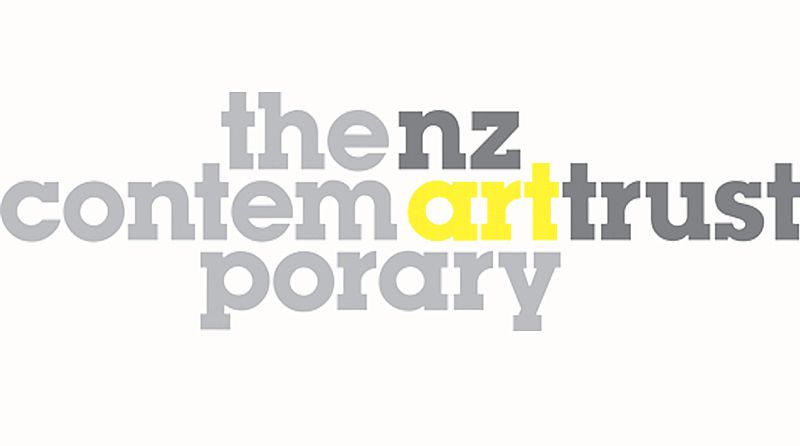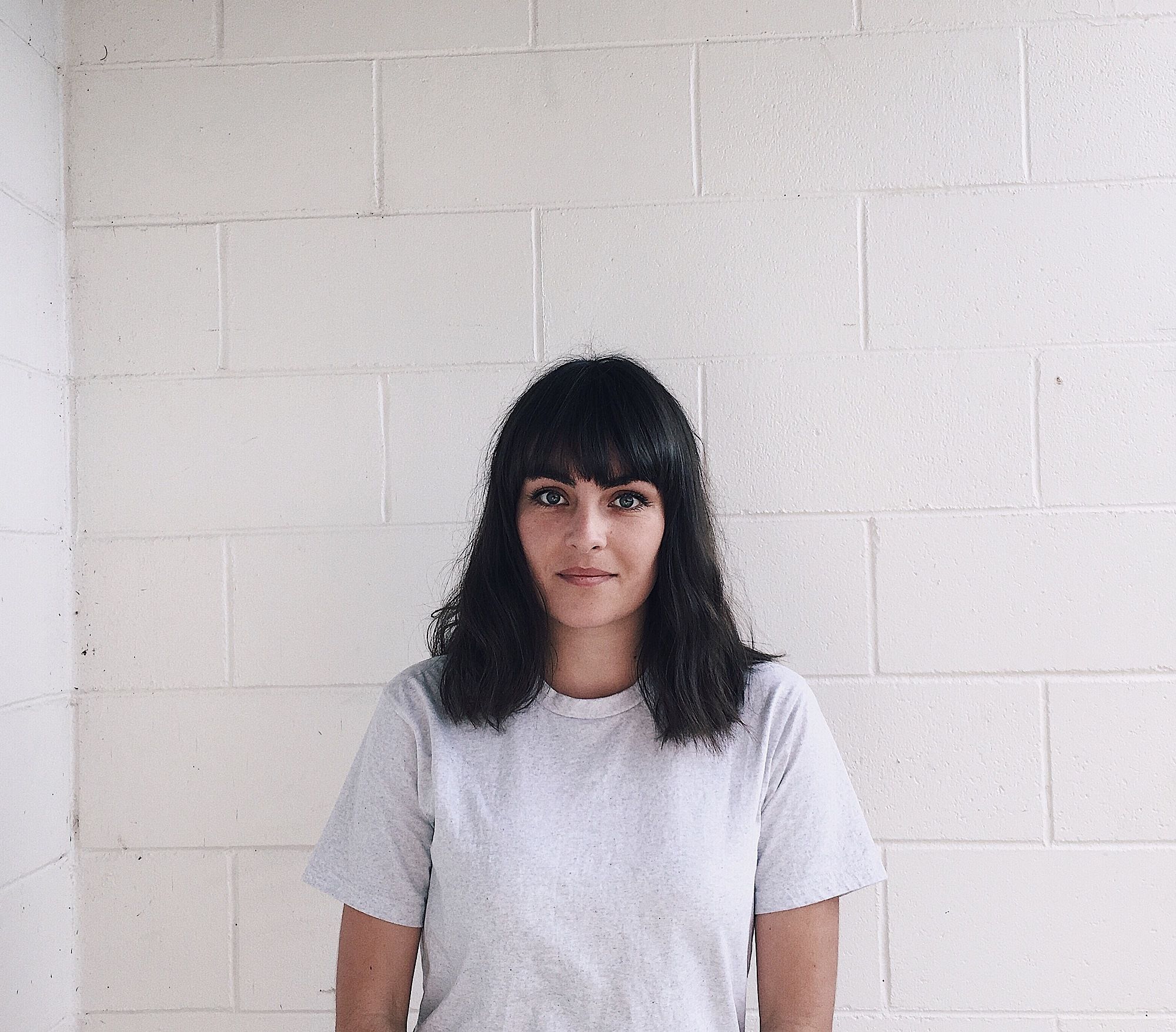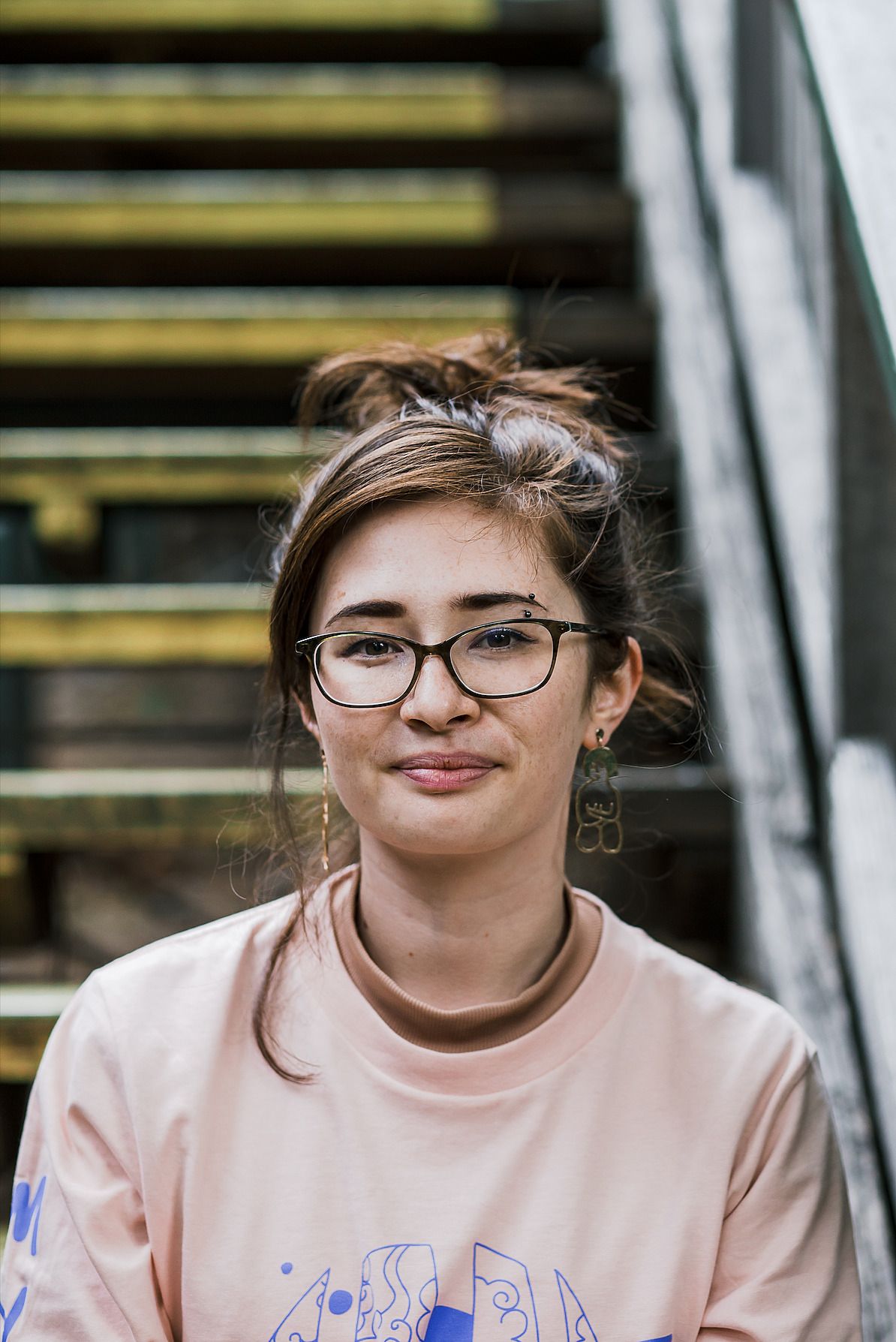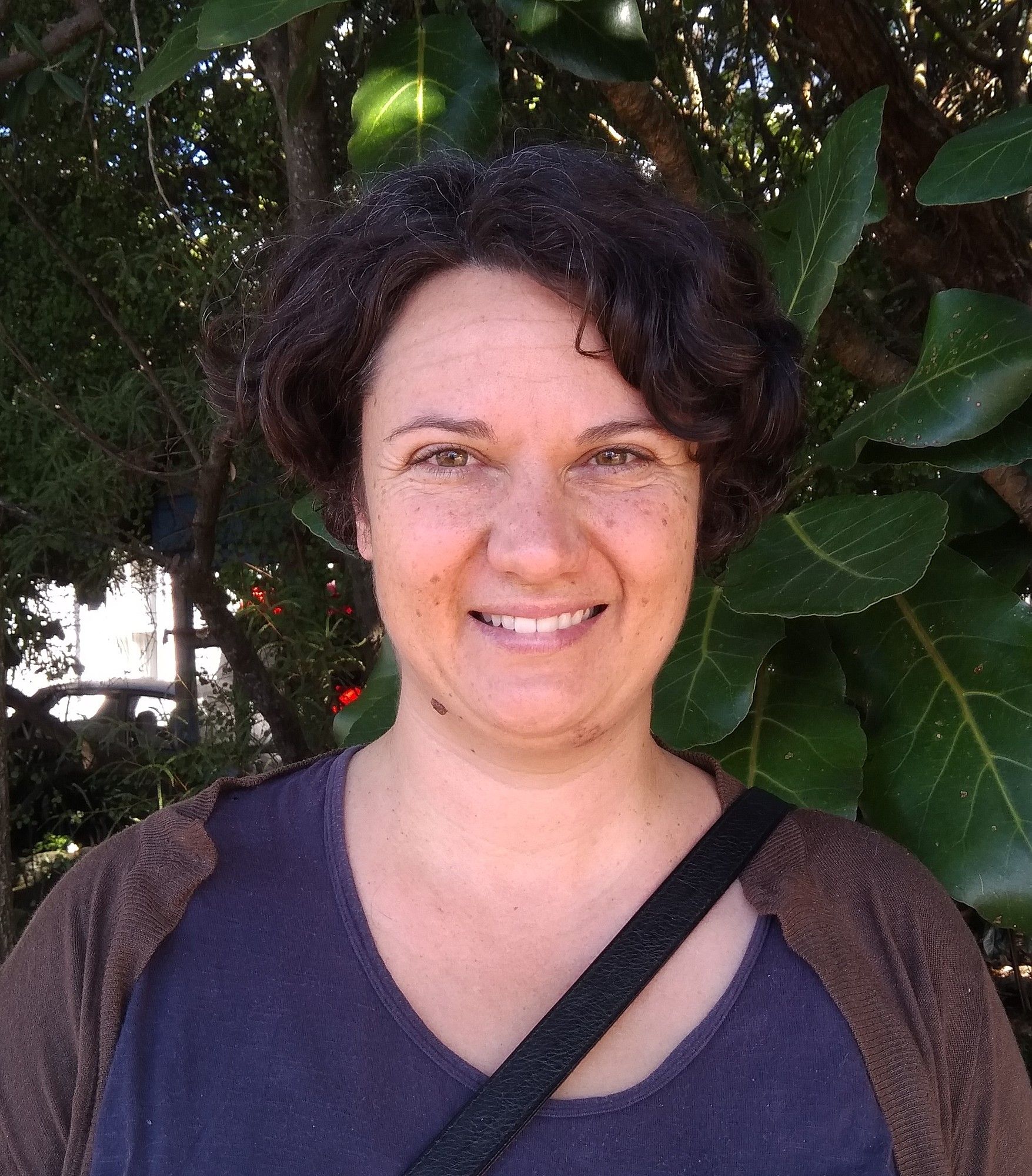The Unmissables: Three Artworks to See in October
The best art on show in the dealer galleries of Tāmaki Makaurau Auckland in October 2020.
A monthly round-up of artworks from the dealer galleries of Tāmaki Makaurau that we keep returning to.
Hot on the heels of Artweek Auckland, this month’s Unmissables glares into the sun, reaches out to our closest primate species and takes us back to school.
Our team of art critics, India Essuah, Tulia Thompson and Vanessa Crofskey, has trawled the streets of Auckland to showcase some of the most exciting art on show.
Henrietta Harris’s latest exhibition Burn For the Moon combines the brooding landscapes that featured in her last exhibition, Hidden People, with her distinctive and impressive style of portraiture in a series of moody, cinematic scenes.
The subjects of her oil paintings are seen walking on deserted, wintry beaches, bracing themselves against cold winds, shrugging a jacket on or off, shielding their eyes or furrowing their brows against a glaring sky. There’s a sense of harshness, balanced by pastel colours and soft brush strokes. The show’s text says the portraits resemble stills from a coming-of-age film, and indeed the subjects make for perfect protagonists – beautiful yet uncomfortable, alone, seemingly lost in unknowable thoughts (all while sporting impossibly soft hair and enviable wardrobes). The muted backdrops depict places ordinary enough to feel familiar, or floating against a solid colour. It's impossible not to wonder about each person, and, if they’ve met, what they think of one another, and why.
While most of the pieces don’t feature the wavy distortions or smears of paint of her earlier work, she still veers into similar territory, raising themes of perception, memory and identity. In several works, the subject’s face or back is blurred as though a camera has yet to find its focus, and in others, the subject’s likeness appears to gently disappear into the wind.
Harris has noted that her sketches and studies often attract as much admiration as her finished works, and these give an intriguing glimpse into the beginning stages of the paintings shown alongside them. While beautiful in their own right, each of Harris’ exhibitions build on the last in a considered and fascinating way, and she’s explained she becomes intent on pushing her technical skill when she’s mastered a particular technique. In this show she includes a bronze sculpture of a hand. In an Instagram post, she says it developed as she worked on making jewellery, leaving the question of what might be entailed in her next ambitious project. – IS
Henrietta Harris
Burn for the Moon
Melanie Roger Gallery
14 October – 7 November 2020
Henrietta Harris Look for Light, 2020 Photo courtesy of Melanie Roger Gallery
Henrietta Harris Everything Everything, 2020 Photo courtesy of Melanie Roger Gallery
The silver-coloured, cast-bronze David Greybeard reaches out his hand towards an invisible Jane Goodall. David Greybeard Edition for Global Tour plunged me to memories of my nine-year-old self: the girl who tied her frizzy hair in a low ponytail like Jane’s and, aided by the rich descriptions of the chimpanzee family Jane worked with, imagined a brave future getting close to wild animals.
The late-night during Artweek was the perfect time to see Australian artist Lisa Roet’s Brother’s Keeper at Gow Langsford because chattering humans rubbed up against the other primates. Roet’s series of sculptures explore the relationship between simians and humans. It includes a lux, gold-plated, endangered Golden monkey, which had another life as a giant monkey scaling buildings – an earlier public artwork in which Roet confronted the threat we humans pose to the Anthropocene.
The black and gold marble bust of a chimpanzee stood out for me; the beautiful colouration in the marble muddies pleasingly with the fine lines and detailed expression. Roet’s intention is perhaps to reframe how we see apes, to honour them as we might heroic figures. But there is something disquieting in the piece too; it conjures our history of treating animals as objects. In The Age of Empathy, Goethe’s Bone a cast bronze chimpanzee hand rests in another. These tender hands echo our own.
You’ve got to be curious and impressed by Lisa Roet’s sustained focus on simians for over two decades. Other artists might – understandably – engage with social and environmental causes and then look away. Maybe Roet can’t. Chimpanzees are endangered across Central Africa, in part because of deforestation.
“We’ve dissociated ourselves from nature,” said Jane Goodall, when she last spoke in Aotearoa. Goodall says we need hope and a critical mass of young people who are fighting for the environment. We also need artists like Roet, facing us back to our own animal bodies and the harm we are doing. –TT
Lisa Roet
Brother’s Keeper
Gow Langsford
30 September – 24 October 2020
Lisa Roet, David Greybeard Edition for Global Tour, 2020. Photo courtesy of Gow Langsford.
Imagine my surprise upon walking into Mokopōpaki’s Brown Room, and seeing a Wellington East Girls’ College blazer attached to the wall by a metal coat hanger, the uniform tie slung casually around its neck. As a former WGC girl, I recognised the familiar teal blue colours of my sister school immediately. Something I hadn’t expected to see up in Tāmaki.
A uniform blazer is an interesting object to display in a gallery, more often found stranded in a Sallies or tucked discreetly at the back of a family wardrobe. Many elder siblings will pass their uniform down to younger brothers and sisters. Some former highschoolers will hold onto their uniform as a memento for such a formative, if uncanny, period. Exhibited by artist Dr P, the blazer references ‘the real Dr P’, her mother, who was an old girl at Wellington East. The patch of pins proudly attached to the blazer’s label recall both profound and mundane legacies; the cultural groups and committees that the artist’s mother was part of. In the catalogue notes, Dr P writes that these depictions of her mother in highschool are of “knowing and not knowing”. Time volleys back and forth. One person’s future, hazy and uncertain, transforms into another person’s past recollection. The future of the blazer-wearer becomes concrete, but still unknown to casual viewers. Memory is something that is both worn and retrieved.
Dr P connects the blazer to her work Lumen accipe: Receive the light, placed in the front window of Mokopōpaki. Borrowed plants – native and introduced – sit underneath the glow of a tall lamp, surrounded by chicken fence. There is a photo behind the lamp, and a mirror. For anyone who grew up in Wellington, the title of the window show will be familiar from he motto of most of the city’s highschools, including WEGC. Lumen accipe et imperti is the full phrase: to receive the light and hand it on. Hence the lamp. It’s about tuakana/teina relationships, about gaining knowledge and then becoming a vessel for others. In the programme notes, there is an alternate interpretation offered: “For there to be an image or whakaahua/likeness, light received by the camera must pass through a lens.”Placing Lumen accipe at the entrance of the show frames the way we consider the photographs and video footage that follow throughout the gallery, how we might think of photos like we think of clothes. As objects of transference. –VC
A.A.M. Bos, Carole Prentice, Dr P
Colonial Road
Mokopōpaki
23 September – 7 November 2020
Colonial Road, 2020 Exhibition detail Photo: Arekahānara
Dr P, Lumen accipe: Receive the light (detail), 2020 Tanalised fence post, wire, fixings, vinyl flooring, tōtara, Podocarpus tōtara, pōhutukawa, Metrosideros excelsa, English oak, Quercus robur, plastic pots, antique standard lamp, gilt mirror, duraprint Installation dimensions variable Photo: Arekahānara
central
The Unmissables is presented in a partnership with the New Zealand Contemporary Art Trust, which covers the cost of paying our writers. We retain all editorial control.
Feature image: Lisa Roet, The Age of Empathy, Goethes Bone, 2020. Image courtesy of Gow Langsford.


